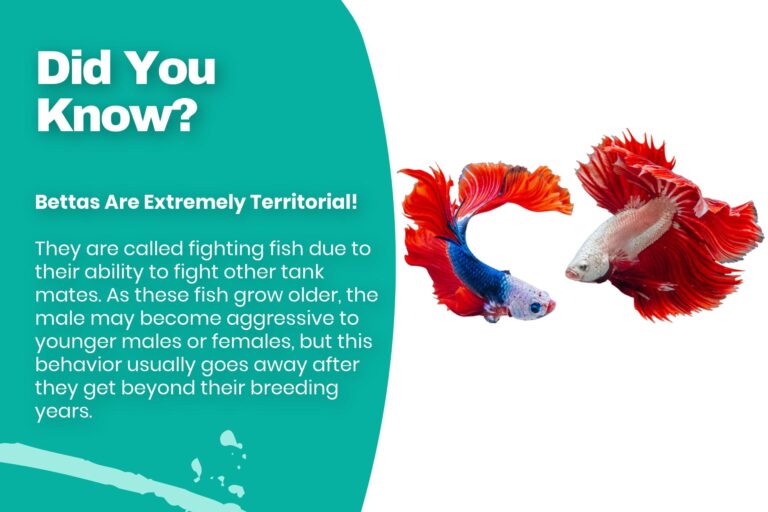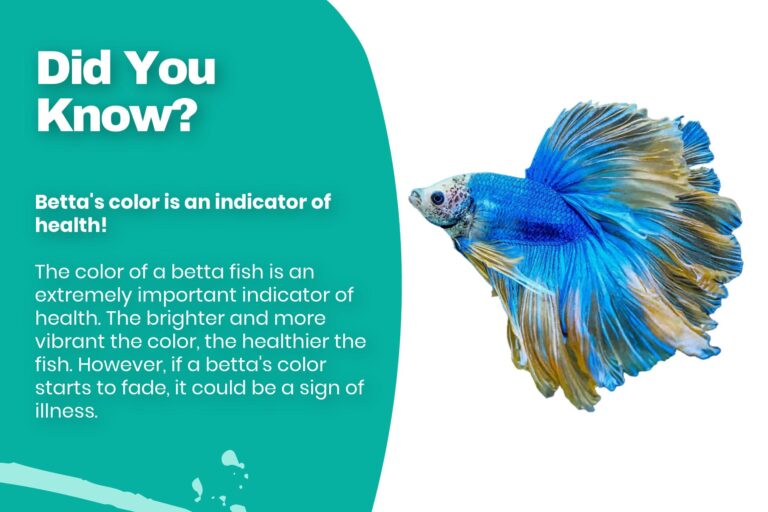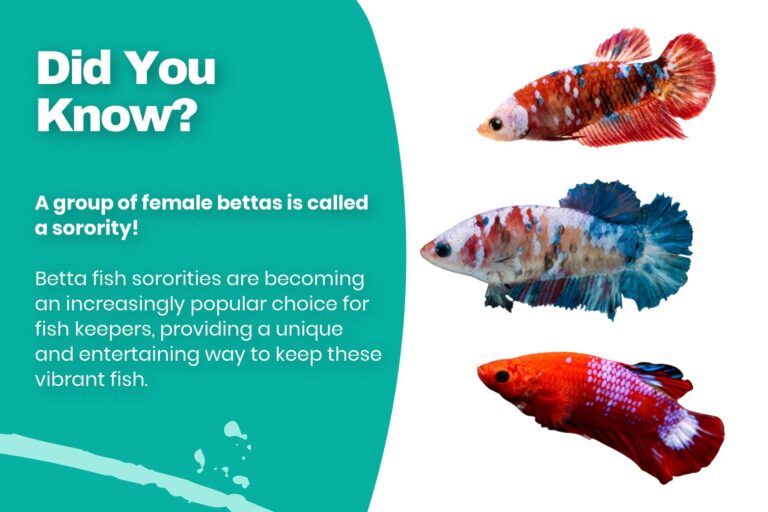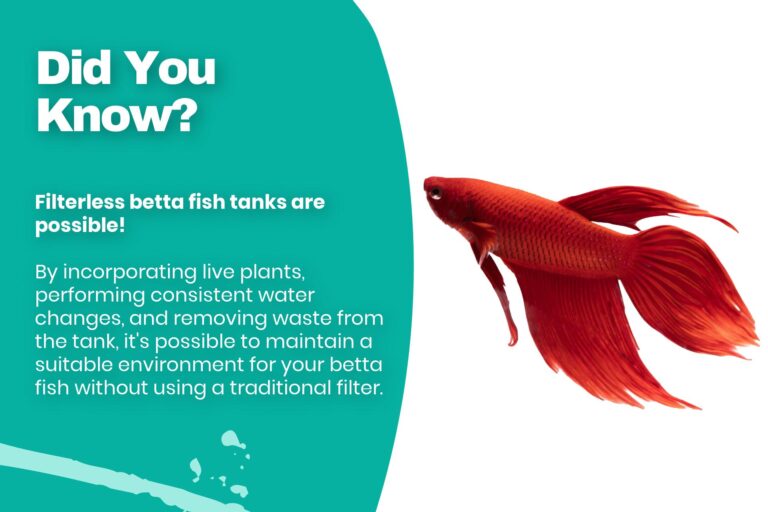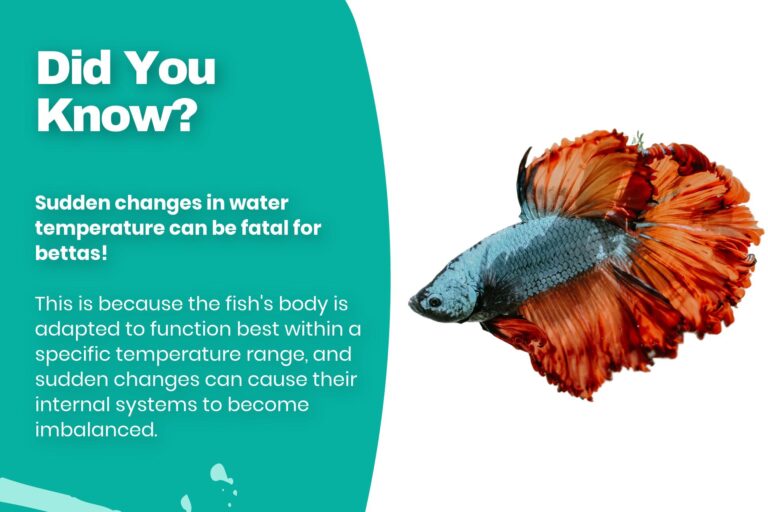Keeping Betta Fish Healthy: The Complete Betta Fish How to Care Guide
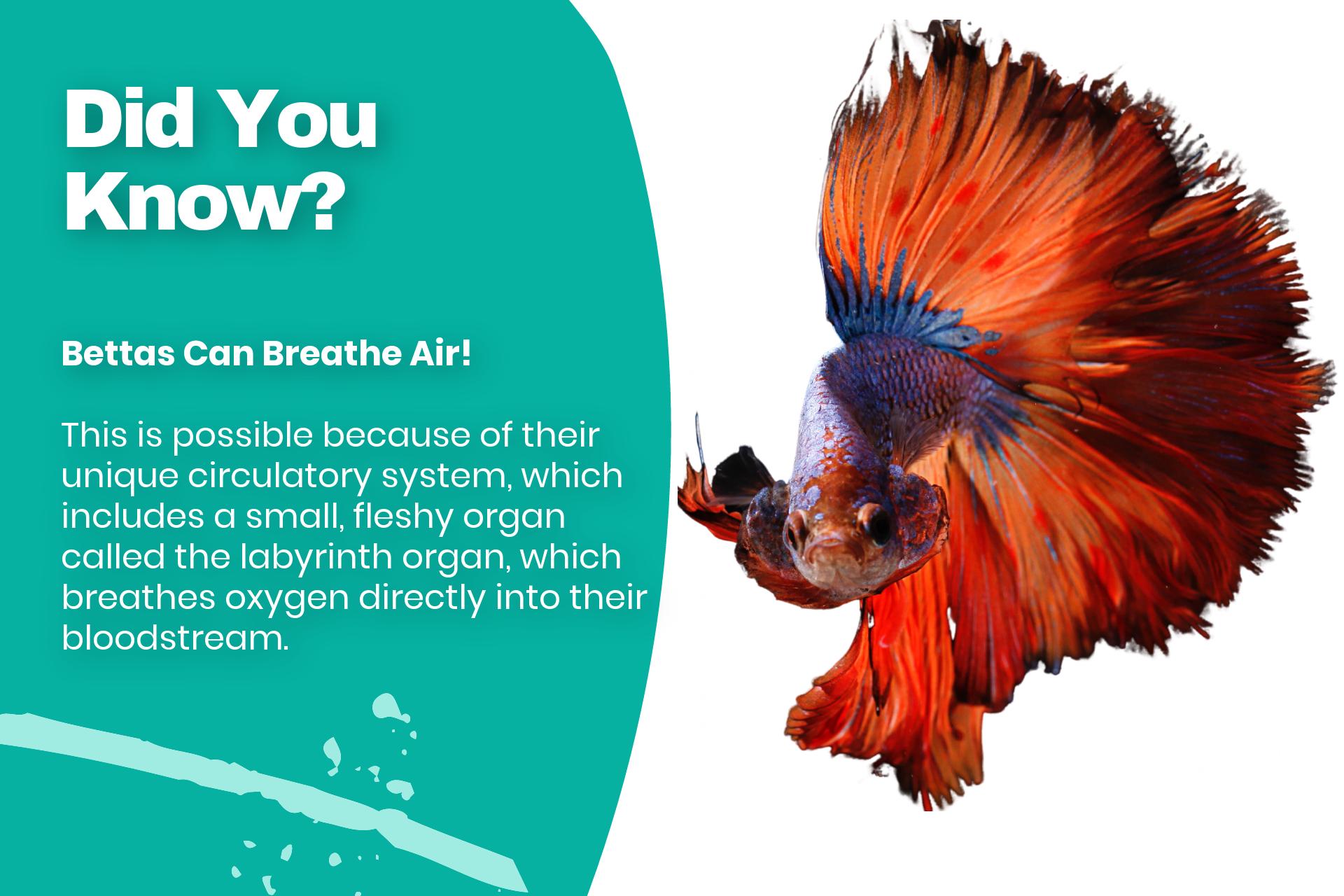
A well-cared-for betta can live for several years, brightening up your aquarium and bringing joy to your daily fish-keeping routine.
Table of Contents
Quick Answer
To keep betta fish healthy, start with a minimum 5-gallon tank with a heater and gentle filtration system. Maintain water temperature between 76-82°F and monitor pH, ammonia, nitrite, and nitrate levels. Feed your betta fish a balanced diet consisting of betta-specific fish flakes or pellets and live or frozen food. Avoid housing male bettas together due to aggression, but select suitable peaceful tank mates for a community tank setup. Regular tank maintenance and water changes are essential, and paying attention to signs of common diseases will help keep your betta fish healthy and thriving.
Choosing the Right Betta Fish Tank
When choosing a betta fish tank, it’s essential to consider the aquarium size for your betta fish’s health and happiness. Betta fish, also known as Siamese fighting fish, are beautiful fish known for their vibrant colors and striking fin shapes. Although many betta owners start with a small fish bowl, betta fish need a minimum tank size of 5 gallons to thrive. However, a larger tank is highly recommended for betta fish to have ample space to swim and explore.
Importance of aquarium size for betta fish
A larger betta tank provides a more stable environment, resulting in less stress on your betta fish. Proper aquarium size ensures adequate space for water filtration, which helps maintain betta fish water quality by controlling ammonia and nitrite levels. Moreover, larger betta tanks enable you to have live plants and even consider suitable betta fish tank mates.
Benefits of live plants in a betta tank
Adding live plants to your betta fish tank enhances the overall aesthetics of the environment and also provides mental stimulation for your betta. Live plants offer natural hiding spots and contribute to healthy water quality by absorbing harmful toxins.
Ensuring proper water quality
To keep your betta fish healthy, it is crucial to monitor and maintain the water quality in your betta tank. This includes keeping an eye on water parameters such as pH, temperature, ammonia, nitrite, and nitrate levels. A water heater and a good quality filter will help in maintaining stable water parameters and ensure the health of your fish.
Monitor and maintain tank water parameters
You can prevent many common betta fish diseases by regularly monitoring your betta fish tank’s water parameters. Invest in a quality water testing kit to check water parameters routinely and ensure your betta stays happy and healthy in its aquarium.
Housing Your Betta Fish with Tank Mates
Betta fish are beautiful fish that can live with certain types of fish. As a part of complete betta fish care, betta fish tank mates should be chosen wisely to ensure the health and happiness of your betta. In a community tank, always consider the temperament and care requirements of additional fish species. Many betta owners have found success with bottom of the tank dwellers, like snails and certain shrimp varieties, as well as peaceful fish that won’t nip betta fins
Introducing tank mates to your betta fish
Introducing new fish to your betta tank should be done slowly and carefully to avoid stress for both your betta and new tank mates. Start by making sure the aquarium size is adequate for all fish with enough space for everyone to live comfortably, and maintaining proper water quality with balanced ammonia and nitrite levels. As you prepare the tank for new fish, live plants can provide hiding places for betta fish tank mates, quelling territorial behavior.
Understanding the common betta fish tanks mates challenges
Despite your best efforts with betta care, there can be challenges when housing your fish with tank mates. Some betta fish may display territorial behavior, leading to aggression or stress for both your betta and its tank mates. To keep betta fish healthy and happy, you need to monitor their behavior closely and be prepared to take action, such as creating barriers in the tank or moving the fish to a different aquarium if needed. Always stay aware of the signs of aggression and stress to ensure the wellbeing of all fish in the aquarium.
Feeding Your Betta Fish
Betta fish, also known as betta splendens, are carnivorous by nature. These popular freshwater fish love a diet that includes a variety of high-quality fish food such as fish flakes, pellets, and live food. Many betta fish keepers also supplement their betta’s meals with brine shrimp, bloodworms, and daphnia to support their betta’s health.
Tips for a balanced betta fish diet
To keep your betta fish healthy and happy, it’s essential to provide a well-rounded diet. This can be achieved by offering a mix of fish flakes or pellets formulated specifically for bettas, alongside live or frozen food. Offering a diverse diet ensures that the nutritional needs of your betta fish are met.
Scheduling proper feeding times
It’s important to establish a consistent feeding schedule for your betta fish. Generally, bettas should be fed once or twice per day, with the proper amount being just enough that the fish can consume within a couple of minutes. Overfeeding can lead to fish health issues and contamination of tank water.
Monitoring betta fish eating habits
As a responsible fish keeper, you should closely watch your betta fish during feeding times. This helps ensure that your fish is eating well and helps you detect any changes in their appetite. If your betta fish won’t consume their food within a few minutes, consider reducing the amount you give them to avoid overfeeding and potential water quality issues in the betta tank.
Ensuring Optimal Water Quality for Your Betta Fish
Ensuring optimal water quality is vital to keep your betta fish healthy and happy. Appropriate water conditions play a pivotal role in the overall wellbeing of a betta fish, as poor water quality can lead to stress, disease, and even premature death.
Recommendations for betta fish water conditions
To care for your betta fish effectively, you should maintain a water temperature between 76-82°F, which can be achieved with the use of a heater. Moreover, you should pick a tank with a capacity of at least 5 gallons to give your betta fish ample space to thrive. Additionally, a gentle filtration system is essential to keep the water in the tank clean and well-circulated without causing too much disturbance, so choose a filter with caution.
Tips to maintain betta fish water quality
To maintain the best water conditions, diligently check the pH, ammonia, nitrite, and nitrate levels in the tank using a reliable test kit. The ideal pH for a betta fish’s environment is between 6.8 and 7.4, while ammonia, nitrite, and nitrate levels should be kept as low as possible. Incorporate live plants in your betta fish’s tank to naturally stabilize the water parameters and remove some toxins. Make sure you remove any decaying leaves or uneaten food from the bottom of the tank regularly, as these can deplete water quality.
Routine tank maintenance best practices
Adopt a regular maintenance schedule for your betta’s tank to guarantee optimal water quality. This includes changing 25-30% of the tank water every week and cleaning the gravel to prevent the buildup of waste and bacteria. Keep a separate container for occasional use when you need to transfer your betta fish temporarily for deep cleaning of the tank.
Identifying Common Betta Fish Diseases
Taking proper care of a betta fish involves being aware of the common betta diseases that can affect your little aquatic friend. When keeping a betta, it’s essential to be vigilant about the health of your fish and recognize any potential issues as early as possible. Some common betta diseases include fin rot, dropsy, Ich, and swim bladder disorder.
Recognizing early warning signs
Being able to recognize the early warning signs in your betta fish can help you address the problem before it becomes more severe. Signs of fin rot may include frayed or discolored fins, while white spots on your betta’s body are often indicative of Ich. If your fish is having difficulty swimming, staying near the surface or at the bottom of the tank, it may be a sign of swim bladder disorder. Observing your fish regularly and monitoring its behavior will help you catch these diseases in their early stages.
Learning how to treat betta fish diseases
When it comes to treating common betta diseases, it’s crucial to act quickly and consult a local fish expert or online resources for guidance. In many cases, adjusting water quality, temperature, or diet can alleviate the issue with betta fish, such as fin rot, but some diseases may require specific medications or treatments. Treating diseases, such as Ich, might include raising the water temperature and adding aquarium salt or medication.
Prevention and care for a betta fish after recovery
Once your betta has recovered from a disease, it’s vital to take steps to prevent the issue from recurring and keep betta fish healthy again. This could involve maintaining regular water changes, feeding a varied diet, and monitoring the tank’s overall environment. By providing proper care and paying attention to your betta’s needs, you can ensure your betta fish stays happy and healthy.
Putting It All Together: The Complete Betta Fish How To Care Guide Essentials
As we’ve learned throughout our journey in betta fish care, it’s crucial to find the right balance when keeping your betta fish healthy and happy. The first thing to keep in mind is the size of your tank – a minimum of a 5-gallon tank is necessary. A larger tank provides better living conditions, but don’t rush to combine different fish species into a community tank without proper research. Remember that both male and female betta fish tend to be territorial, so it’s best to avoid housing males in the same tank, as they tend to be more aggressive.
Importance of professional betta fish care knowledge
There’s so much to learn about taking care of your betta, and a variety of betta fish species out there! Always do your research, and when in doubt, consult the community of betta fish enthusiasts for tips and insights. Understanding the needs of your betta will make it easier for you to provide the best possible environment, which in turn leads to a longer and healthier life for your beloved pet.
Key elements in providing an ideal environment for your betta fish
A great living environment includes the right temperature, as bettas are tropical fish that require consistent water conditions. A heater helps maintain the optimal temperature for your betta to thrive. Additionally, selecting tank mates that are compatible with betta fish can benefit their well-being. Be cautious when introducing new tank mates or transferring your betta fish to a new tank. Also, make sure to feed your betta a balanced diet, including live food like brine shrimp or bloodworms, to keep them healthy and energetic.
Conclusion
Our Complete Betta Fish How To Care Guide has shed light on various aspects of betta fish keeping, from housing these eye-catching freshwater fish to choosing the most compatible tank mates for your colorful pets. Responsible betta fish ownership involves understanding the need for suitable tank conditions and knowing that males shouldn’t be accommodated in the same tank, as it increases the risk of aggression. Nonetheless, community tank setups can safely house female bettas with a variety of other peaceful fish species. Though many bettas were initially kept in fish bowls, it’s essential to provide ample space in a proper aquarium to maintain the betta’s health and overall well-being. Keep striving to expand your knowledge about betta fish care and stay updated on the ways to ensure their health and wellness over time. By doing so, you promote responsible betta fish ownership and contribute to the community of betta enthusiasts who truly want the best for their aquatic friends.

